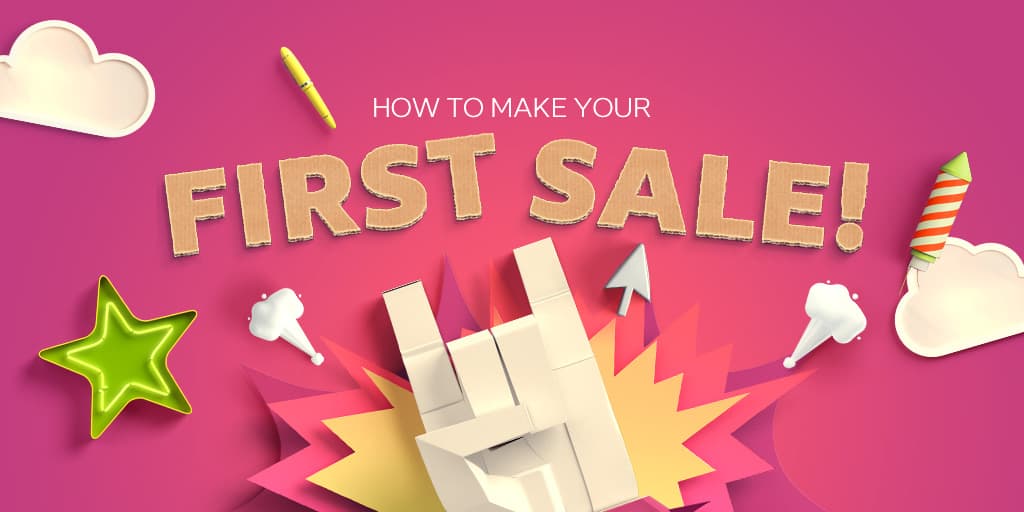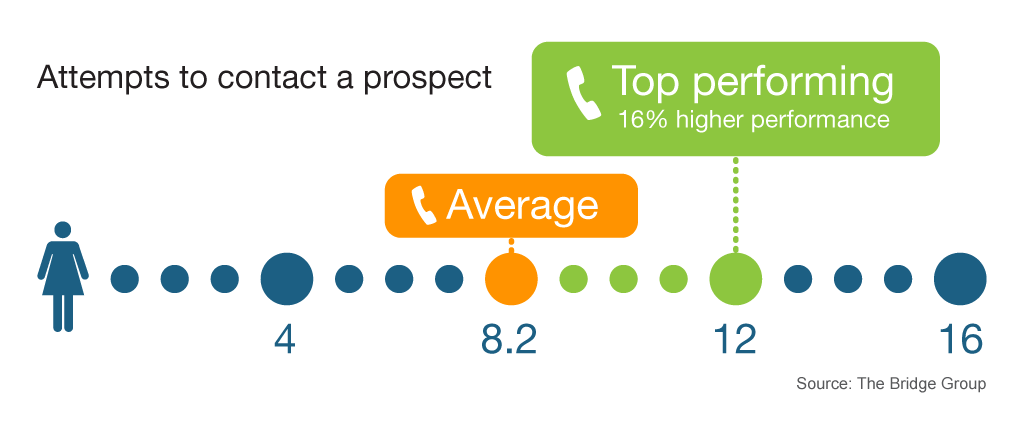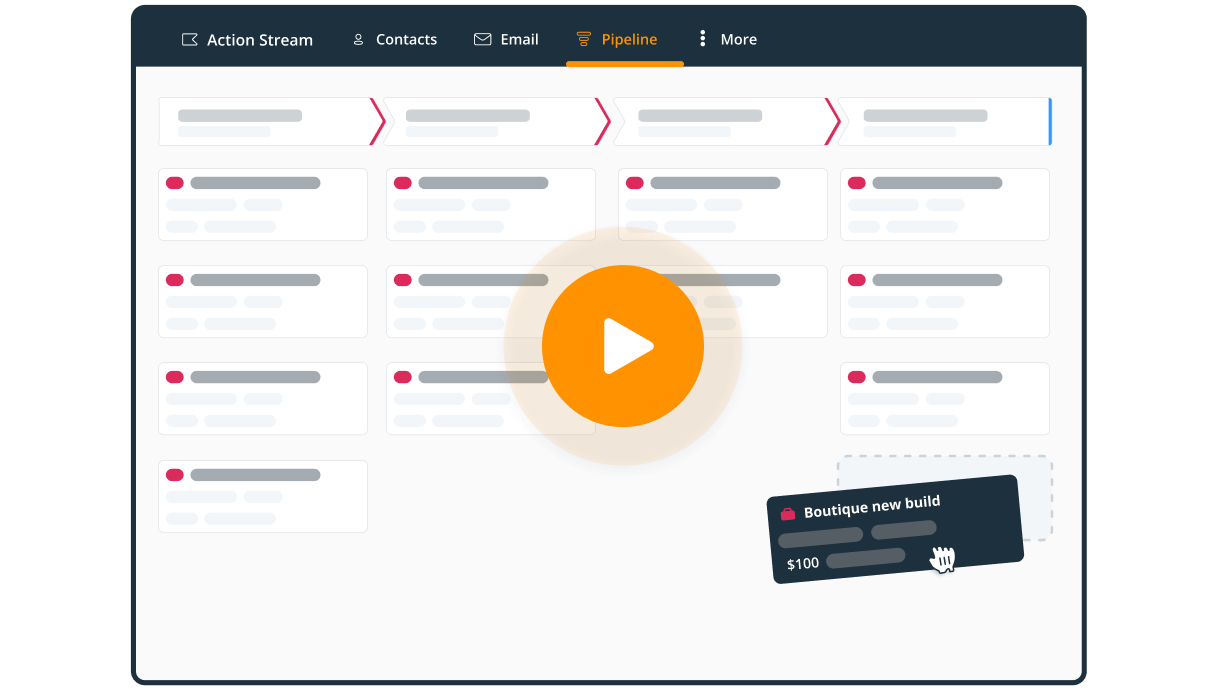
How do you get your first 10 customers?
First, forget marketing. It’s great but, a little slower to bear fruit. Today it’s about making your first sale.
Second, forget hiring a salesperson… yet. You need to figure out how your solution is sold before you know what type of salesperson you need.
Get out of the spreadsheet and into your client’s office.
Pre-sell
Ideally, you should start selling at least 4-6 months before you have a sellable product. If you are still working on your solution, do not wait, start selling now! Clay Collins used a 5-step formula to pre-sell his LeadPages software product and ended up with over €40,000 in pre-orders.
Here is the 5-step formula to pre-sell
1. Involve your prospects in the creation of your solution
Consult them early and often so they feel like they helped co-create your product. When the time comes to ask for money they have already mentally bought into it.
2. Use the EIN (Early-Investor-Narrative)
Create the story that early customers are investors. This will help your prospects believe their input helped co-create your product because they actually did. Everyone likes the idea that they are part of a bigger story and success.
As the earliest investors of the solution, they will benefit most because they’ll be the people who get early access and the most returns from it as a result.
3. Scarcity
You can do this in two ways:
A. Limit the time in which prospects can get early access or a special price for the solution.
B. Limit the number of spots available for pre-order.
4. Social proof
This is a hard one but makes every subsequent sale easier. This can be a quote or testimonial from a big name in the target industry. Press or high-profile articles about the product. Quotes or testimonials from market peers. Or lots of discussion about the product on social media.
5. Status indicators
Assign early customers a special status in your product or community. Perhaps a badge or give them a limited edition run on a special gift.
It should be something they can use as a status indicator among their peers. And something for you to appreciate their support and reward them for it.
Sell now
If your product is ready to start selling now then make a list of 10 ideal targets from your own network. Choose people you have worked with in the past that are in your target network.
The reason being is that these are warm prospects where you have already built up trust and rapport. Be hyper-focused on the right market and customer type.
If someone is a maybe fit, mark them as not a fit for now and select someone else. Don’t make the mistake of trying to sell to everybody. It doesn’t work!
Prepare your conversation
Prepare a very basic script of what to discuss with the prospect.
Focus on the problems that your solution can help with. Ideally, these should be common problems that the market experiences.
Create 5-6 questions that you could ask. Rehearse this a bit until you feel like the conversation and questions sound natural.
The questions should help validate the problem the customer is having, validate if your solution is the right fit, and determine if they are willing to pay for it.
The answers determine how you describe your solution to them using the prospect’s own words as much as possible.
Examples of questions
- Would you mind telling me about your current situation?
- What would you say is one of the top three priorities you are grappling with right now in your company?
- What’s not working?
- If (Your solution) addressed (repeat issues raised back to them), would you be willing to pay for that?
- Would you make a purchase order for it now?
- Given what we have discussed here today, what would it take for you to become a customer?
The Rain Group has a list of 50 powerful, open-ended sales questions around rapport, aspirations and afflictions, impact and envisioning a new reality.
Reach out and meet with them
Outreach via phone, email, or LinkedIn. Be persistent until you talk to everyone and ask if you can meet them. Those that say no, ask if they can recommend someone else instead.
You will need lots of persistence at this stage. Even prospecting within your warm market requires lots of touches so do not get discouraged by lack of replies.
The Bridge Group researched 355 of the leading SaaS companies and found that salespeople make on average six to eight attempts before throwing in the towel. However, high-performing salespeople make up to 12 attempts.

Meet with the 10 prospects and be upfront with them. Explain that you have a new solution that you are looking to validate in the market.
But take the pressure out of the conversation and explain that you are looking for expert feedback on your idea and solution. A sale would be the ultimate validation but either result is a successful meeting for you. This takes the pressure off the prospect and allows them to relax more and hear about your solution.
Your mindset is key. You are not going in to sell them. You are going in to find out their problems and see if you can help them solve it.
Finish every conversation with the question “What would it take for you to become a customer?” This determines your next step.
Did you get a sale?
Yes? Well done.
No? If you can’t sell your product or service to someone who already knows, likes, and trusts you then carefully consider if you are talking to the right type of people and if there really is a market for your product. If you are really really sure, step it up a notch.
You need to widen your net. If you are selling business to business start by identifying 100 companies you can sell to in your local area (drivable distance). Start calling them and if anyone shows interest then go and meet with them. At this stage of the business, you really need face-to-face meetings to hear their issues, see their reactions when you describe your product and understand why they are saying yes or no.
Your first sale, it does not matter too much about making a profit on the sale. Travelling and meeting face-to-face will probably not scale for your business.
The points you are trying to prove are:
- someone will pay for your product (and hopefully pay your asking price).
- you are targeting the right market.
- get an example customer to show your next prospect which will make the sale easier.
How to handle customer objections
If you get a NO from a prospect you really need to know why.
Hearing ‘no’ from a prospect is most often the starting point rather than the end. Prospects will tell you NO all day. But if you ask questions and are a good listener, you will learn why, and figure out a solution. Asking questions gets the prospect engaged in the conversation.
Getting people to talk about themselves is a great way to get them to open up and be receptive to any offer you have.
Seth Godin has an interesting take on customers’ reluctance to say “yes”. He writes:
 What “no” means
What “no” means
- I’m too busy
- I don’t trust you
- This isn’t on my list
- My boss won’t let me
- I’m afraid of moving this forward
- I’m not the person you think I am
- I don’t have the resources you think I do
- I’m not the kind of person that does things like this
- I don’t want to open the door to a long-term engagement
- Thinking about this will cause me to think about other things I just don’t want to deal with
What it doesn’t mean
I see the world the way you do; I’ve carefully considered every element of this proposal, I understand it as well as you do and I hate it and I hate you.
Over time you can begin to prevent objections from happening in the first place by determining the needs of the customer by asking Situation, Problem, Implication, and Need-Payoff questions as outlined by author Neil Rackham in his bestselling book the SPIN Selling strategy.
Block out time and be relentless
This is harder than it sounds. Picking up the phone and reaching out to people can be uncomfortable at first. If you are a product guy your temptation will be to slip back to tweaking the product. If you are a finance guy, there are numbers you could be calculating instead. It is much easier to do what is comfortable instead of doing what is needed.
So you need to block out sales time and be strict about it. Set 1 hour at the start of every day where you are not allowed do anything else but reach out to people and be relentless about it. The top sales book list has a few great books on sales motivation to help you pick up that phone.
The above was written with B2B, SaaS and Enterprise companies in mind but the principles should apply to all businesses.









Thanks for the clear and concise post Alan. I signed up for your program after I saw your post on reddit on the sales forum.
Glad you liked it John. Come back and share how those first sales go for you.
Love it, nice! Thanks, Alan. Success to everyone on starting their businesses and happy holidays!
Hi, thanks for your comment and Happy Holidays to you too.